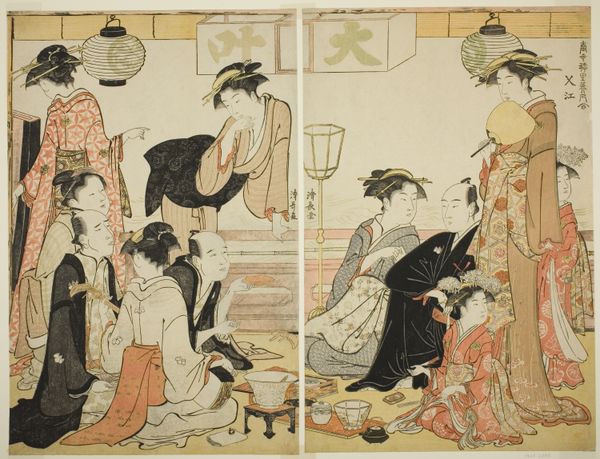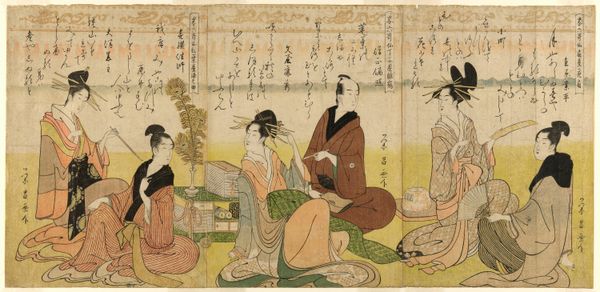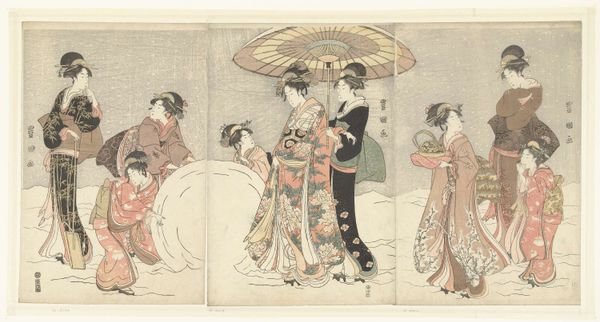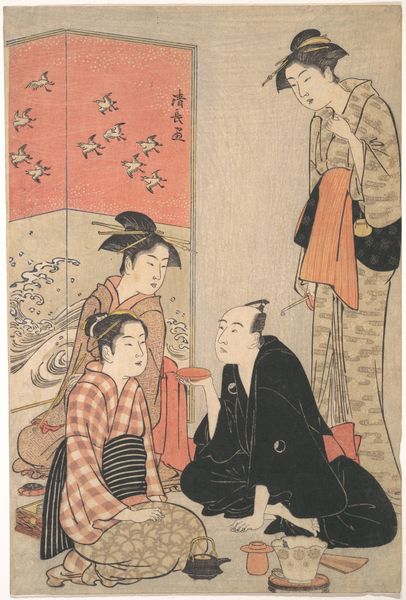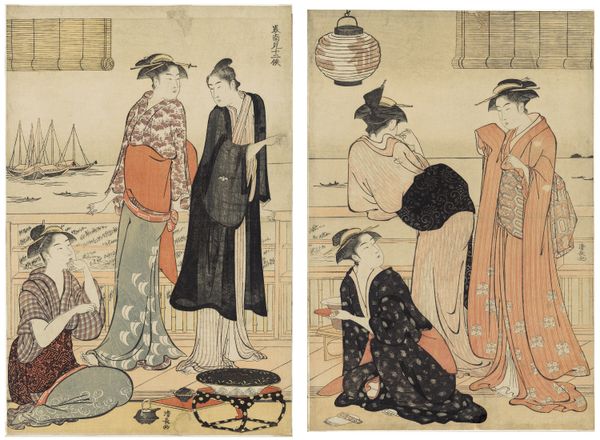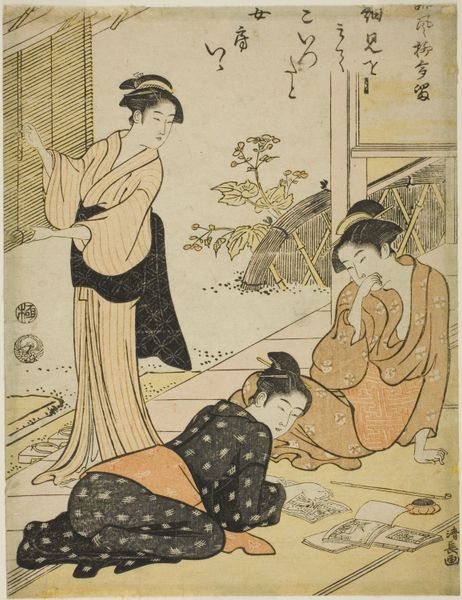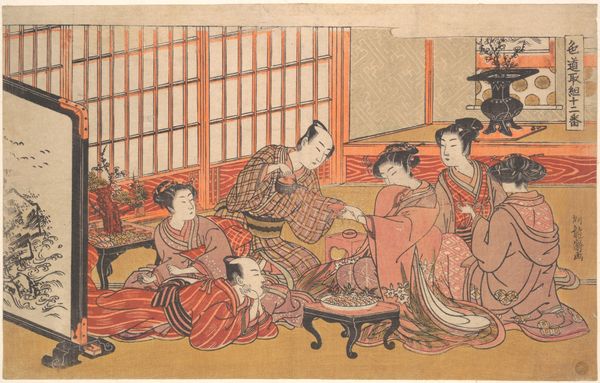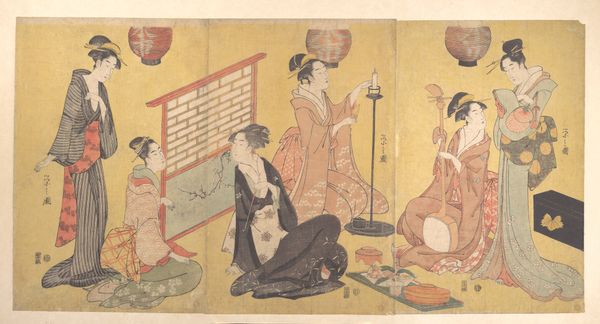
Naniwaya Okita and Takashima Ohisa playing a game of ken c. 1793 - 1794
0:00
0:00
#
portrait
# print
#
asian-art
#
ukiyo-e
#
genre-painting
Dimensions: 10 1/4 × 14 15/16 in.
Copyright: Public Domain
Editor: This ukiyo-e print, "Naniwaya Okita and Takashima Ohisa playing a game of ken," was created around 1793-1794 by Chōbunsai Eishi. It depicts what seems like an intimate gathering. The details in the kimonos and the domestic setting have caught my attention. I wonder, what stands out to you about this work? Curator: Well, I'm immediately drawn to the production of this print. Ukiyo-e was a highly commercial art form, relying on skilled artisans and publishers. We see here a specific print-making economy in action, appealing to a consuming public eager for images of celebrity courtesans. Editor: So, the value wasn't necessarily in the 'fine art' aspect, but more in its reflection of popular culture? Curator: Precisely! And consider the materials: the woodblocks, the pigments. These weren’t just tools; they were part of a whole system of labour. Each impression meant more labour, more capital exchanged. These women themselves, Okita and Ohisa, were commodities of a sort, marketed to an audience. Editor: It is interesting to consider them within a consumerist frame, with a hierarchy of labor behind the scenes. The image captures leisure, but was the product of much work. What do you make of the details suggesting a game of 'ken'? Curator: The ken game depicted serves as another material link - from artisan to subject - connecting leisure activity as both the context of labor as well as labor itself! Editor: Thanks, that's given me a completely fresh perspective on this piece! Thinking about the process and commercial aspects changes everything. Curator: Indeed, by looking beyond the aesthetic, we uncover a complex web of material relationships.
Comments
No comments
Be the first to comment and join the conversation on the ultimate creative platform.

